Whether you’re starting a catering business full-time or planning to operate out of your house initially, writing a business plan is essential to getting clear on the type of catering business you want to open. After all there’s some pretty important stuff covered inside of what can seem like a stuffy document.
For the purposes of starting a catering company, think about the business plan as the one place you put your operation details. Things like the cooking equipment you need to purchase and the total cost, tentative catering menu, food costs, and who your target customer is. These are all super important details you need to understand before opening! This document provides a place for you to organize everything.
By the end of this guide, you’ll be able to draft your plan and start on that first catering gig you’ve been planning to open. We also provide templates you can use in PDF and Word Doc you can download and edit. Let’s get started.
Executive Summary
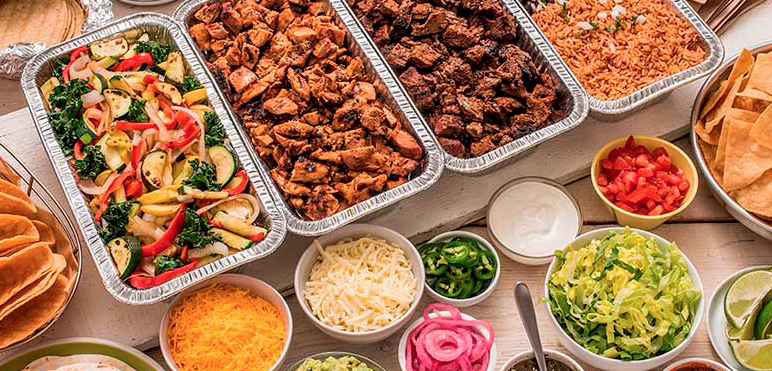
Catering spread for a Mexican food concept.
Start your business plan with an executive summary. This is a way to introduce your catering business so whoever is reading your business plan will know what to expect. This will include a brief introduction of your catering business, a description of your company, the services your catering business will be providing, and the customer focus.
Introduction
A quick introduction helps the reader get a bird’s eye view of your catering business. Here you’ll be talking about what to expect and what you can offer as part of your catering service.
This section isn’t considered lengthy. This usually has two to three sentences. What you need to focus on when writing this down is by the end of it, your reader will more or less understand what your catering business is all about.
Here’s an example introduction you can use as a guide:
The Big Spoon is a small catering business headed by Lydia Smith. She specializes in Italian cuisine but can cater to American, Mexican, and Asian dishes as well. The Big Spoon can accommodate an intimate dinner for 2 up to a large party of 50 accompanied with table settings and chafing dishes to complete that delicious home-cooked meal experience.
Just by the introduction, the reader will know how big your catering business is, what cuisine they can expect to order, and how many people the business can cater for. It also gives them an introductory glance about your catering style wherein you already provide more than just food but also a table setting so they don’t have to look for a supplier for this separately.
Keep your introduction informative but also short enough. You will be able to add in more to the details later on.
Company Description
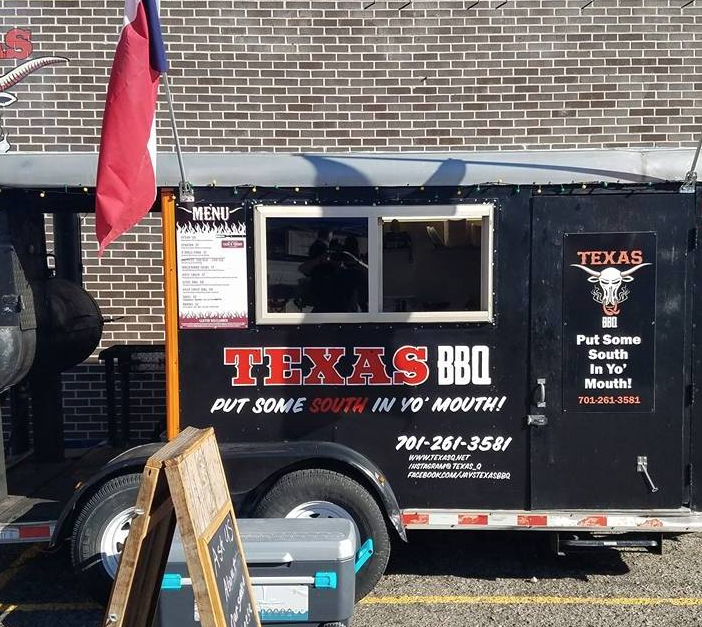
Some food trailers make more than 50% of their annual revenue from catering gigs.
A little background on your catering business is needed in the company description part of the business plan. Here, you can describe the meaning behind the name for your catering business, who the owners are, and what their roles are going to be. Who will be in charge of cooking? Who will be in charge of accounts and marketing?
This may just be brief but this is a way for you to introduce what’s going to happen behind the scenes of your catering business.
Services

Catering works great for food trucks and restaurants.
Although your catering business may sound self-explanatory, it would still be of great help to you if you mentioned the services you’ll be offering.
For example, The Big Spoon already mentioned in their introduction that they’ll be catering food and offering table settings. They could also add that they will be offering an ice cream station and even a cocktail bar.
You will describe more of this in detail later on but you can summarize it and mention it here already.
Customer Focus
For a catering business to flourish, you must know your target market early on. And though a thorough explanation of that can be found in the Market Analysis section, you can briefly state them in this portion as well.
Also, remember that your customer focus would also have to coincide with your skills. You can’t be targeting customers who are vegans if your culinary skills and knowledge do not include cooking vegan food. This is why it’s important to write this early on so you can narrow down the customers you are planning to cater to.
Mission Statement

What’s your mission statement?
Businesses with clear goals stated from the start lead to a successful operation. Why? Because every decision you make revolves around these goals which will lead you closer to success.
Here’s a sample mission statement to picture it out clearly:
The Big Spoon aims to cater delicious home-cooked meals to its customers. Every dish that is served will contain natural and fresh ingredients. We see to it that the service we provide is top-notch so that our customers will feel as if they are being served in a fine restaurant in the comforts of their own home or wherever they choose to have us cater them.
By writing this down in your business plan, you and your staff will have to stand by the standards you’ve set for yourselves. For instance, as stated in The Big Spoon’s mission statement, no fast food will be served and no artificial ingredients will be used so you and your staff will always remember this by heart.
By following this and revolving your decisions around your mission statement, you will be able to keep such standards which will lead to pleased and returning customers.
Company Concept

This is the section of the business plan where you can finally put in detail the concept you’ve been planning for your catering business. Remember the things you’ve been holding back in saying in the introduction? This is the time to write them all down now.
Related Reading: 7 Powerful Ways I Promote and Market My Catering Business
You can start by answering the following questions:
- What cuisine will you be offering?
- How many people can you cater to?
- Will you be offering healthy options such as vegan, keto, or paleo meals?
You may also add in other concept ideas that are not mentioned above. Just make sure to cover everything so you can have a basis for your product line and services to be tackled later on.
Market Analysis
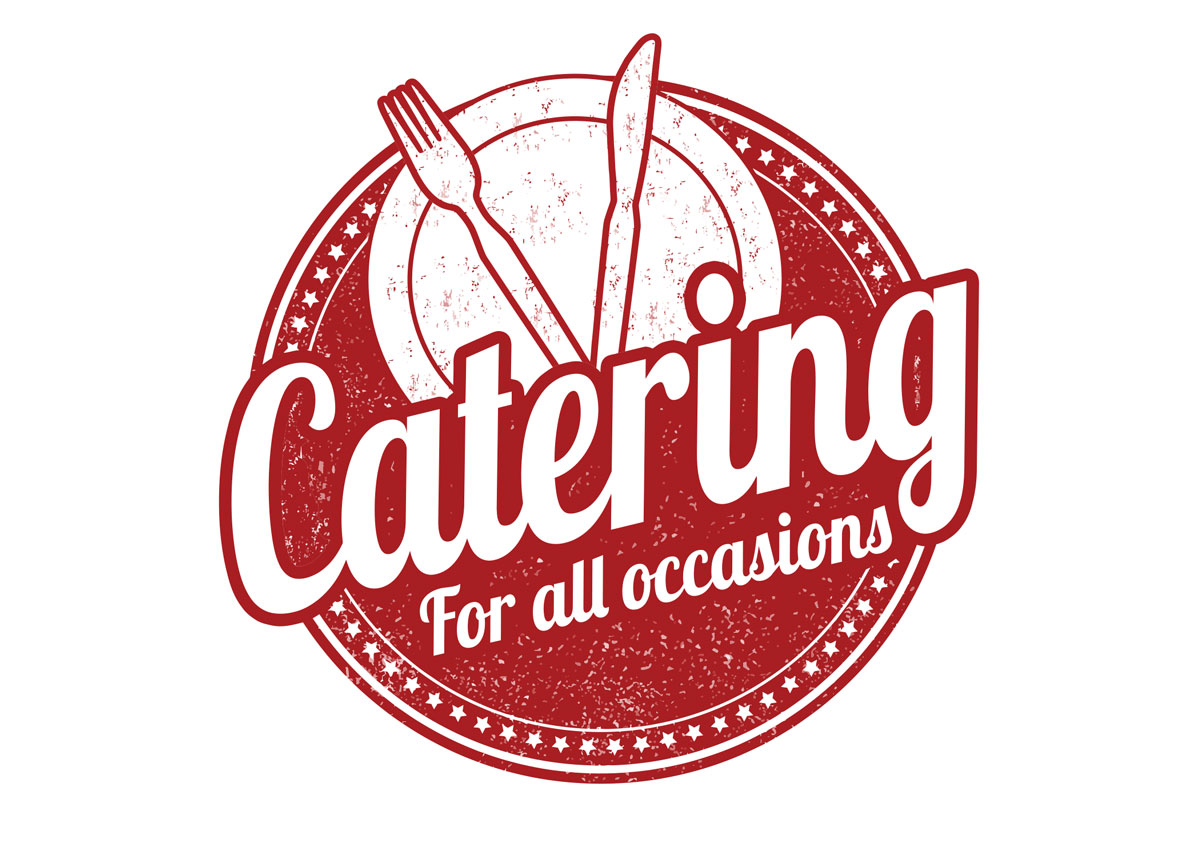
A compelling catering business logo.
Planning to put your business out there means you also have to know the industry you’ll be diving into. This is to help you analyze your potential customers, the growth of the catering business in your area, and the competition.
Target Market
As mentioned above in the customer focus, your skills will have to match your target market. You’ve already written a brief introduction about it so in this section, all you have to do is to explain it in detail.
Industry Analysis

The catering business has been going on for a long while now so it’s important to gather in as much information as you can regarding this industry. This is to help you figure out if there is a potential market for your business and how to put your plans into action.
Another helpful guide is to look into the type of cuisine most people in your area look for. You can then incorporate it into your business and offer it as part of your menu.
The bottom line is that analyzing the industry around you helps you plan better for the future of your catering business.
Competitive Analysis
You will not be the only catering business in your area. You’ll have to consider restaurants as your competition too. Check their prices and set menus. Do a competition check by tasting their food once in a while. Knowing who the players are in this competitive business game gives you the upper hand because you’ll be aware of their strengths and weaknesses and how to deal with them on the field.
Management Structure
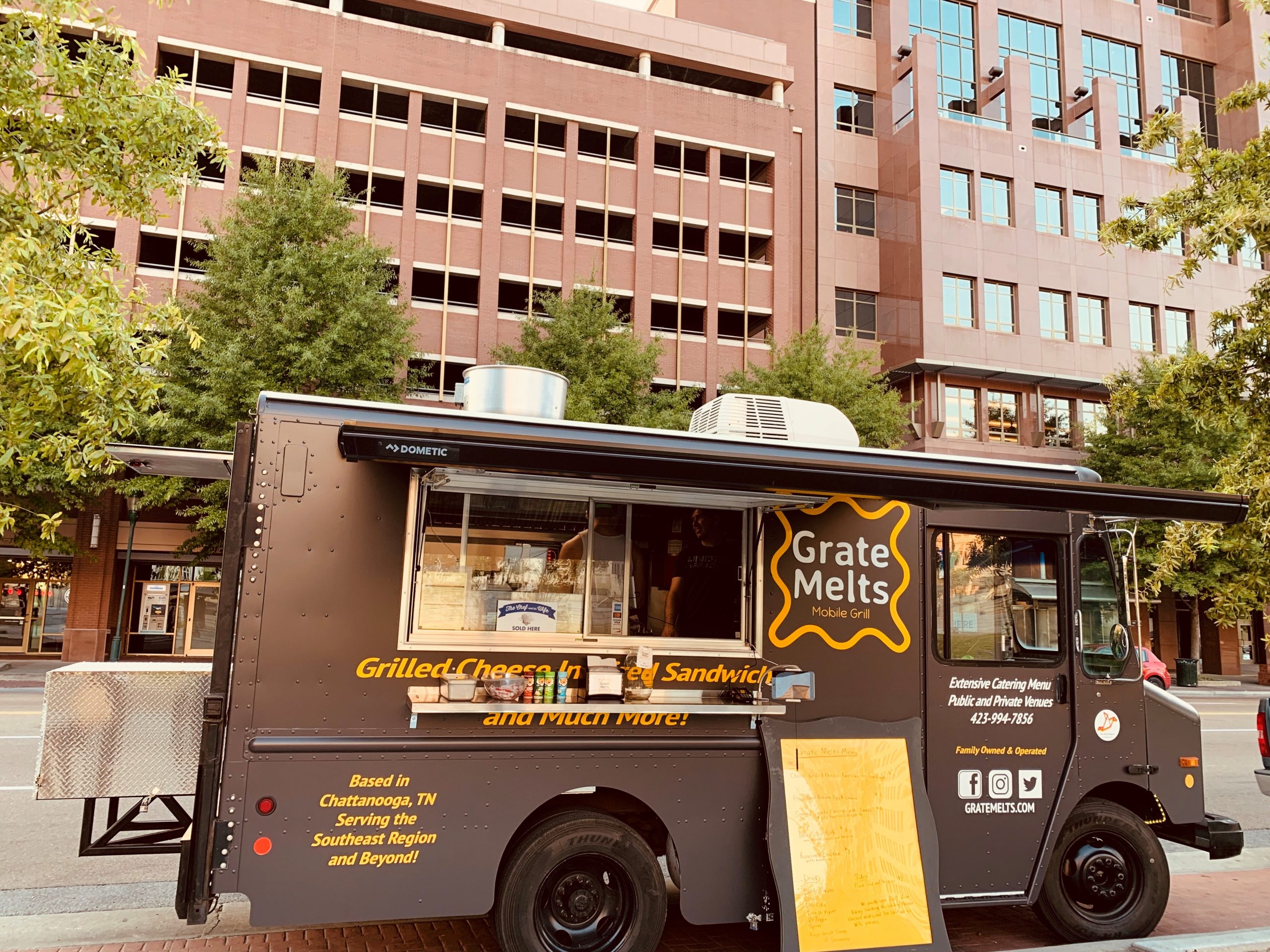
Determine the key players in your business.
A catering service is run by a few people. In this section of the business plan, you’ll list down everyone who is working on this business alongside you as well as the roles they possess in your business. This includes:
- Business Partners
- Accountants
- Co-chefs (If you’re not the only one doing the cooking)
- Wait staff
Why is this so important, you might ask? Stating clear business roles and laying out the management structure keeps everyone in check and helps avoid any misunderstandings. Most businesses that don’t define this early on end up having a messy workflow. So make sure to state each duty clearly for everyone to follow.
Product Line and Services

Burgers are a proven catering option.
This section of the business plan goes hand in hand with your company concept. Here you can present your different sample menus for all the cuisine you wish to cater to. Be sure to include the prices for the set menus per head.
You can also write down the services you plan to offer. Here are some you can consider for your catering business:
- Out of town catering
- Wine bar
- Cocktail station
- Set up style (buffet or plated)
- Table setting (formal or casual, rustic or summer feel)
- Wait staff or food display only
Writing them all down in this section will keep your business more organized which is very important when you start on your catering business.
Sales and Marketing

Grilled chicken is another popular option for caterers.
How are you going to market your catering business? Do you plan to have an ad out in your local newspaper and on social media? Both strategies are fine but you need to find more ways to get your catering business out there.
One way to market yourself is to partner up with rental spaces such as function halls that do not provide food. Give them a proposal that when there are inquiries regarding the rental of their halls, they would present your set menus to the guests as well so they don’t need to trouble over finding a caterer.
Related Reading: How I Started a Legit Catering Business Out of My House
Partnering with several event coordinators is also a way to get your business known. People these days hire event coordinators to do all the planning for them. They expect these coordinators to answer all their questions from food, music, and decorations. By partnering up with an event coordinator, they’ll be the ones to pitch in your catering business to their customers.
Remember to uphold your mission statement as well. By providing good food and high-class standards during your catering event, you’re already marketing your products and services to the number of people you’re catering to. So always make an exceptional first impression because that will stay with the guests long enough for them to remember hiring you on their next and succeeding events.
Financial Plan

Plan your financial future.
Knowing where you’re going to get the funds to start your catering business is a must. This is how you’ll know if your plans are going to be achievable or not. Besides, having a solid financial plan will also allow you to go through with your ideas without any interruptions.
In this section, break down your financial plan into two categories which are your plans to request for funding and your financial forecast.
Funding Request
Some business owners are ready to put up their catering business due to having saved enough money through the years. But what if you lack the funds to do it? Don’t fret. You can still loan from the bank and invite investors.
Whatever your plan is that deals with requesting for funding, include it here so you can document it.
Financial Forecast
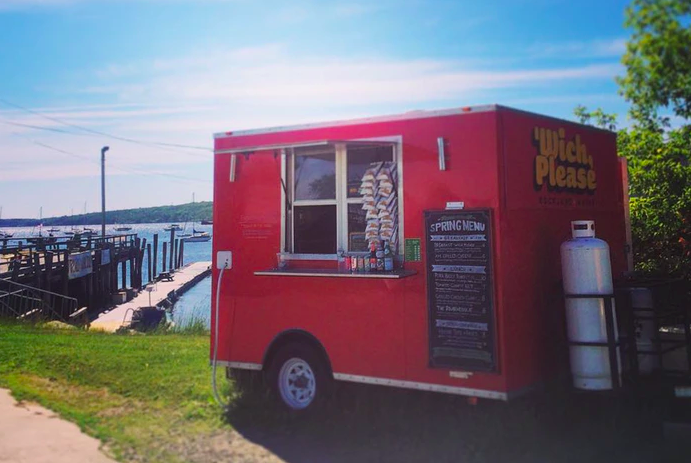
Make conservative and best case scenario financial forecasts.
Reaching break-even is the ultimate goal when you’re putting up a business. You can compute how long it will take you to reach it early on in the planning stage.
You can also list down all your proposed expenses here which include the following:
- Pots, pans, and other large kitchen appliances and tools for cooking
- Chafing dishes
- Dessert displays and trays
- Table cloths, plates, glasses, and utensils
- Uniforms for you and the staff
- Storage boxes and food warmers
You may also add in tables and chairs if you do not want to keep on renting these. But sometimes, the venue where you’ll be catering can provide these as well.
Download Now: Bakery Business Plan Templates for 2021
Be sure to include your staff’s payroll expenses. Since catering events are not done daily (unless you’ve already made a name for yourself and you’re booked every day), you can just have your wait staff be on call and pay them per catering event rather than a daily wage.
By computing these, you’ll know just how much you should allot for your startup capital and how much should your goals be to reach during every catering gig in order to profit off of it.
Operational Plan

What’s your operation plan?
Put your plan into action by making a timeline of your operations. Here is an example:
Date Plan[Insert Date Here] – Finalize the business documents you need such as permits and registrations for your catering business.[Insert Date Here] – Start marketing your business on social media and the local news. Send out proposals for partnerships with event coordinators and function halls.[Insert Date Here] – Hire and train staff.[Insert Date Here] – Start catering when booked.[Insert Date Here] – Achieve goals and reach break-even.
Appendix
The appendix section of the business plan is where you can put all your documentation. This includes photos of your food and table setting and your copies of the permits and registration for your catering business.
Download Templates
Here are the catering business plan samples in PowerPoint, Word Doc, Google Doc, and PDF. These are ideal for commercial or home-based catering businesses.
- Catering business plan template Google Doc
- PDF catering business plan sample
- Catering PowerPoint template
Bonus Tips
- Catering businesses are ideal because there is no space for you to rent which is considered one of the main expenses that can be quite heavy on the pockets. You will be cooking in the comfort of your own home. Just make sure your place can handle heavy cooking and there is enough space for you and your staff to move about.
- It would be nice to learn more about the different cuisines as you go along so you can cater to a wide variety of audiences.
- Include a checklist of all the equipment you need to operate at the start. These equipment requirements make up the bulk of your startup costs. You can download a checklist of frequently used catering equipment here.
Throughout this entire guide, we have been referring to your readers as one of the main reasons why you should make your catering business plan easy to understand. But in truth, making this business plan is for you as well. You will need this plan when you’re requesting for financial assistance in banks and this would also serve as your work guide. So remember to keep it detailed and easy to comprehend because you will be using this on the road to putting up your business.
While opening a catering business can be extraordinarily rewarding there are a few factors you should consider before deciding to push ahead. Creating a business plan lets you understand what the factors are, what’s going to make this business become a success, and how you can profit from the venture.
If you’re serious about starting a catering business, don’t forget to sign up for our Food Business Startup Kit. This free community will give you access to exclusive interviews with catering professionals you can use to help grow your own business.



